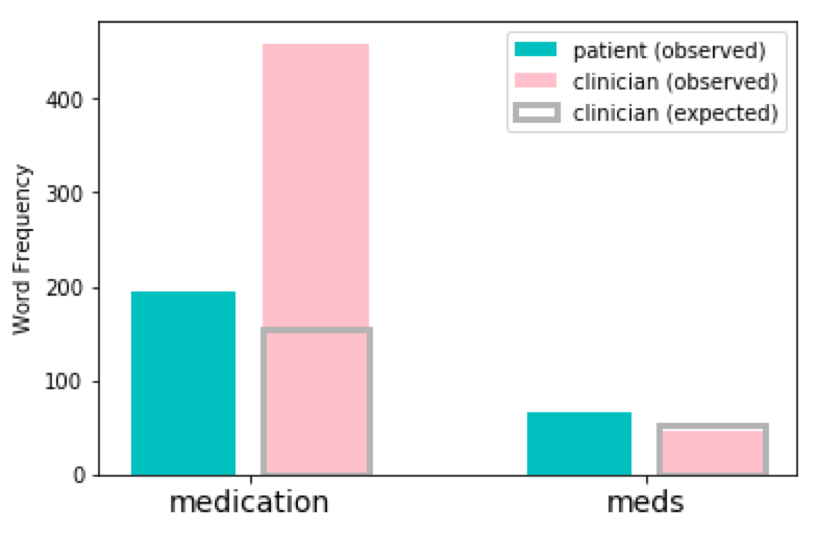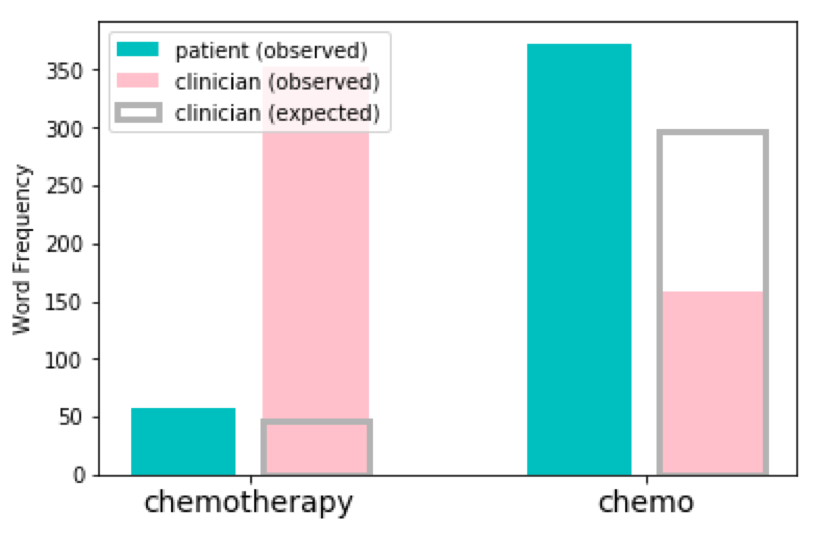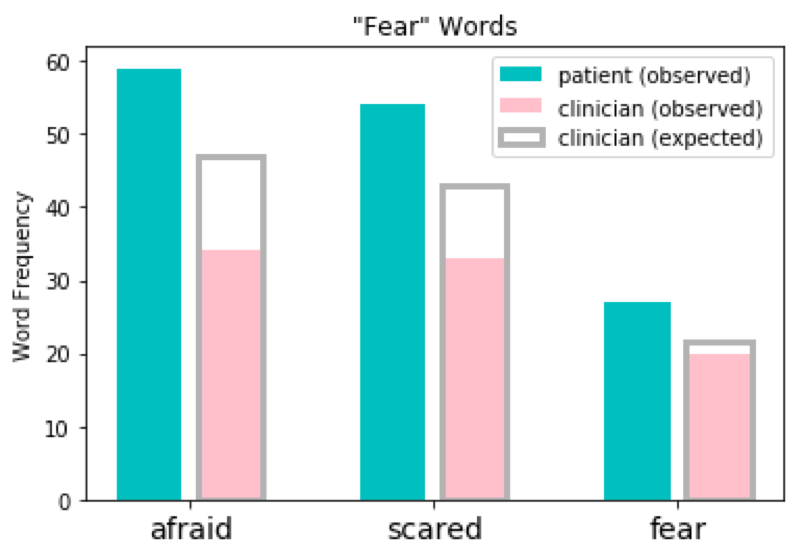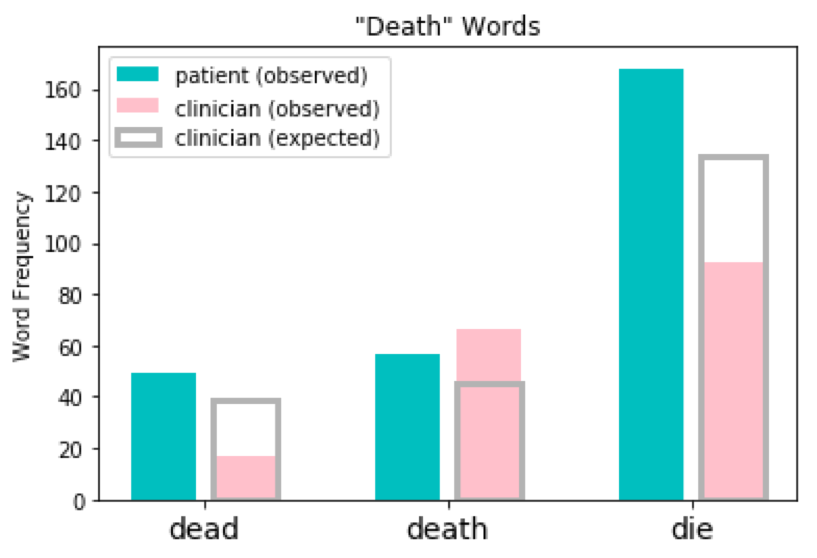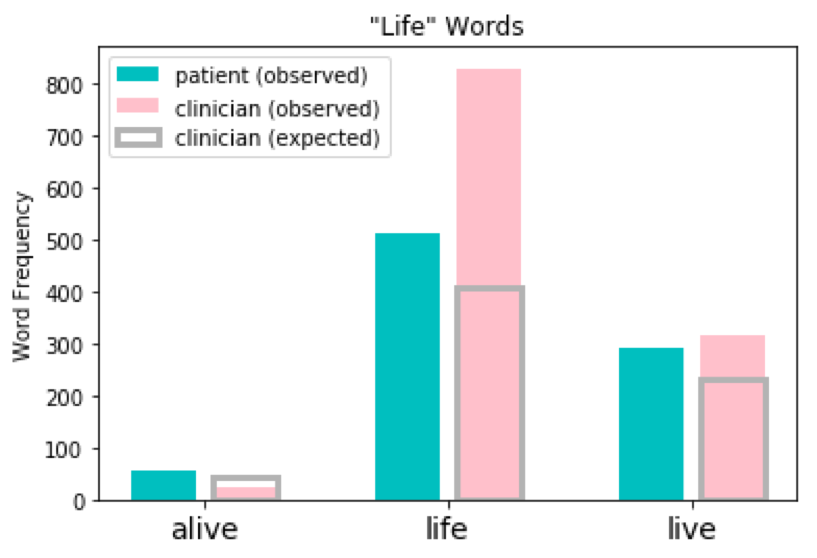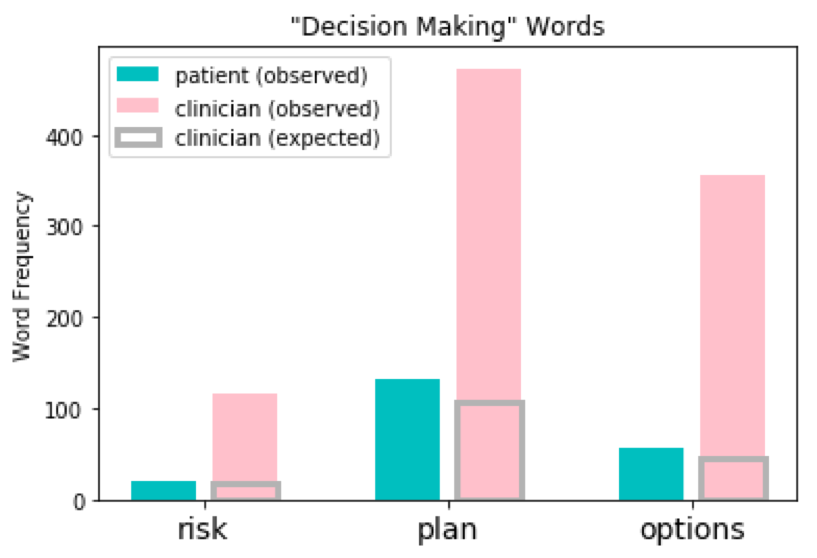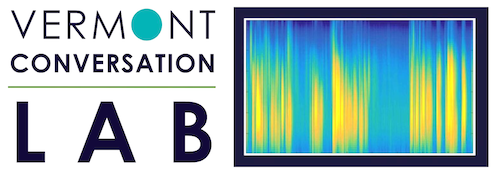Author: Laurence Clarfeld
Posted: February 2020
“Words are chameleons, which reflect the color of their environment.”
Something so simple as which words we choose to speak can be as nuanced and complex as any other aspect of human conversation. As the above quote from the influential American judge Billings Learned Hand suggests, the people with whom we converse can have a significant impact on what we say and how we say it. Because of this “mirroring” effect, caution should be used when prescribing meaning to any similarities or differences in word usage between parties in a conversation. But such a comparison, even without explanation, can be revealing of the different roles of participants in a conversation.
Within the ~360 conversations that comprise the PCCRI (Palliative Care Communication Research Initiative) dataset, the 17,041 unique words were transcribed from audio recordings and subdivided into those spoken by patients/family members, aka “patients” and clinicians. Of all words spoken, roughly 55% are said by clinicians while 45% come from the patient side. Below, we show (without attempting to explain) several interesting comparisons of word usage frequency between these two sides of the conversation, as compared to what would be expected given the disparity in total words spoken. Further investigation of trends such as these may reveal new insights about the function of word choice in these sensitive conversations.

